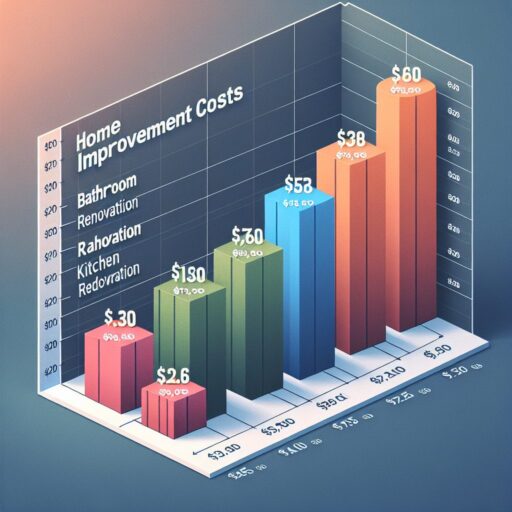Mastering Home Improvement Costs for Budget-Friendly Upgrades
Home improvement is an exciting project. It involves making changes to your house to make it better and more comfortable. However, these changes come at a cost. Understanding home improvement costs can help you plan your budget and avoid surprises. This article will discuss different aspects of home improvement costs.

Understanding Home Improvement Costs
![]()
Home improvement costs depend on many factors. These include the size of your house, the type of improvements you want, and where you live. Some improvements cost more than others. For example, remodeling a kitchen might be more expensive than painting a room.
- Kitchen remodels can cost anywhere from $12,000 to $35,000.
- On the other hand, painting a room can cost between $200 to $1,000 depending on the size of the room and the type of paint used.
It’s important to do research and get quotes from multiple contractors before starting a home improvement project. This will give you a good idea of how much the project will cost.
Also, remember to factor in unexpected costs. Sometimes, problems may arise during the project that might increase the cost.
The Cost of Materials
![]()
Materials play a big part in home improvement costs. The type and quality of materials you choose can greatly affect the total cost of your project.
- For example, if you’re remodeling your kitchen, granite countertops are more expensive than laminate ones.
- Similarly, hardwood floors are more costly than carpet or vinyl flooring.
When planning your project, consider what materials you want to use and how much they’ll cost. You can save money by choosing less expensive materials, but keep in mind that cheaper materials may not last as long.
Labor Costs
![]()
Labor is another major part of home improvement costs. This is the cost to hire professionals to do the work.
- Some tasks, like installing a new roof or rewiring a house, require trained professionals.
- Other tasks, like painting or gardening, can be done yourself to save money.
Remember to include labor costs in your budget. And don’t forget to compare quotes from different professionals to get the best deal.
Permits and Inspections
![]()
Depending on where you live and the type of project, you may need permits for your home improvement project. These permits allow you to legally make changes to your house. They also ensure that the changes are safe and meet local building codes.
- The cost of permits varies depending on your location and the scope of the project.
- For example, a permit for a deck might cost $200, while a permit for a major renovation could cost several thousand dollars.
It’s important to factor in the cost of permits when planning your budget. Also, remember that some projects may require inspections, which can also add to the cost.
The Cost of Time
![]()
Home improvement projects take time. You might need to take time off work to oversee the project. Or, you might have to live in a construction zone for a few weeks or months.
- The cost of your time is something to consider when planning a home improvement project.
- If you’re doing the work yourself, consider how much time it will take and whether you’re willing to put in that time.
Also, keep in mind that projects often take longer than expected. Delays can happen due to weather, unexpected problems, or other factors.
Financing Home Improvement Projects
![]()
Home improvement projects can be expensive. But there are ways to finance them if you don’t have the money saved up.
- You might be able to get a home improvement loan or use a credit card to pay for the project.
- Some people also use their home’s equity to finance improvements. This is called a home equity loan or line of credit.
Remember to consider the cost of borrowing money. Interest rates and fees can add to the total cost of your project.
Conclusion: Planning is Key
![]()
In conclusion, understanding home improvement costs is important. It helps you plan your budget and avoid surprises. Remember to consider all the factors that can affect the cost, including materials, labor, permits, and time. Also, explore different financing options if needed. With careful planning and research, you can make your home improvement project a success without breaking the bank.
